In the heart of Barcelona (5)
Resuming our tour from Plaza de Sant Just, we will have to walk back towards Plaza de Sant Jaume, which we had left just a few minutes before. After a few steps along the narrow Carrer de la Dagueria, then, we will turn left into the large and crowded Carrer de Jaume I, which will bring us back to the square. Since this moment we will literally penetrate into the history of Barcelona. Crossing the square towards Carrer del Bisbe, indeed, I took a few steps forward in order to admire the wonderful arcade surmounting the street and connecting two of the buildings forming the Palau de la Generalitat. The decorations are typical of the artistic style of the late Renaissance, when the palace was built.

Once again in Plaza de Sant Jaume, I turned left after a few metres into what at first side might seem a dead end alley. In fact, Carrer del Paradis continues with a sharp bend, leading with a slight ascent to a building showing a curious nameplate. Right in the centre of Barcelona, indeed, the last thing you could expect to find is probably a Roman temple!
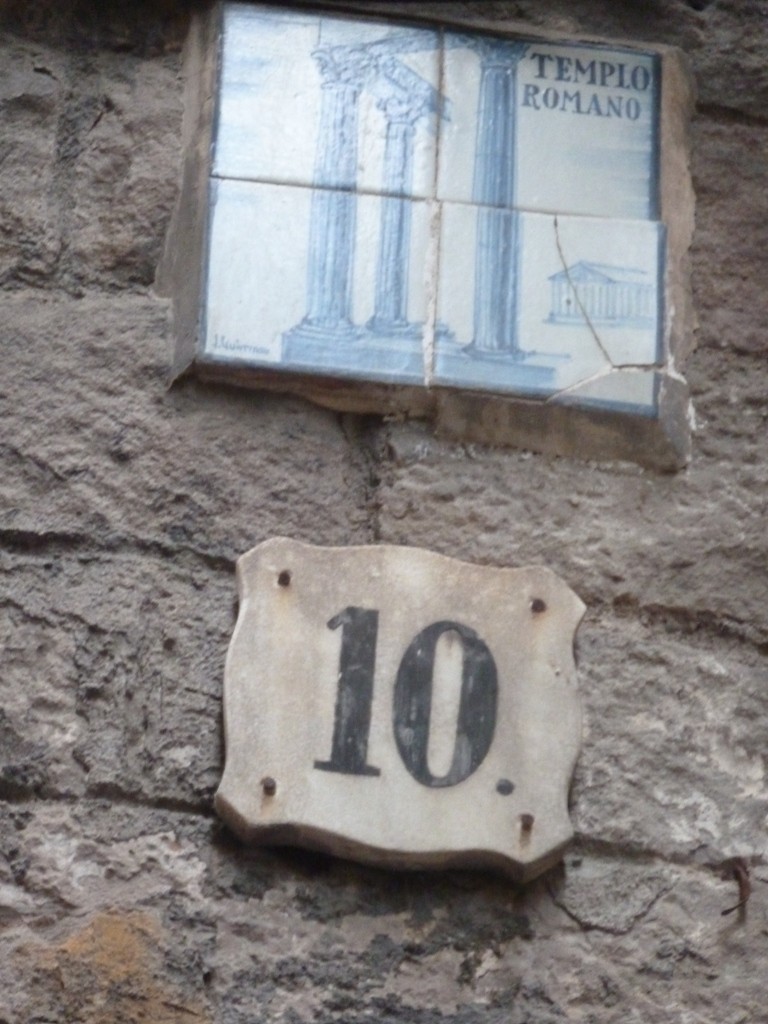
And yet, as you will find once entered into the palace, it is exactly the place where the ancient Temple Romà d'August, built in the 1st century A. D. and dedicated to the Roman emperor, was found. The reason for the choice was the fact that the point where the palace stands is apparently the highest place of the Roman Barcino, an insignificant hillock called Mont Taber, located 16, 9 metres above sea level. Anyway, once into the building I made my way down a few steps and into a small but enchanting space where the ruins of the old temple are placed. Contrasting with the intense light blue walls and accompanied by a pleasant silence, the four columns with architrave seem to offer a good chance for contemplation for the visitor.
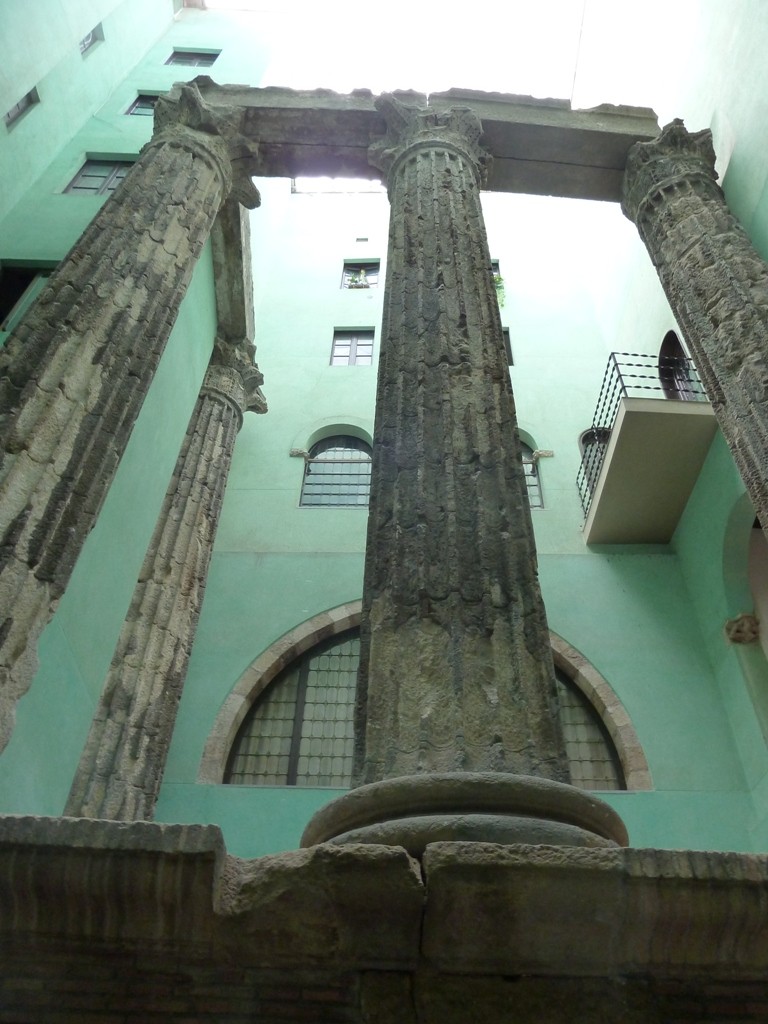
Carrer del Paradis then lead me to the southern side of the Cathedral. Though far from being comparable to the facade, this side is quite interesting as well, forming a lovely corner with the surrounding palaces (Casa de l'Arcadia and Palau de la Generalitat). Going on with my tour, I turned right and crossed the crowded Carrer dels Comtes, going straight on towards Plaza del Rei, whose impending presence was announced by the tower of the capilla de Santa Agata. This square, whose dimension is surprisingly quite reduced, is normally one of the favourite stops for the tourist guides, so it is quite common to find it literally invaded by tourists (as was indeed my case). Anyway, it will not be difficult to make your way through them in case you want to visit the numerous features of interest which the square offers.
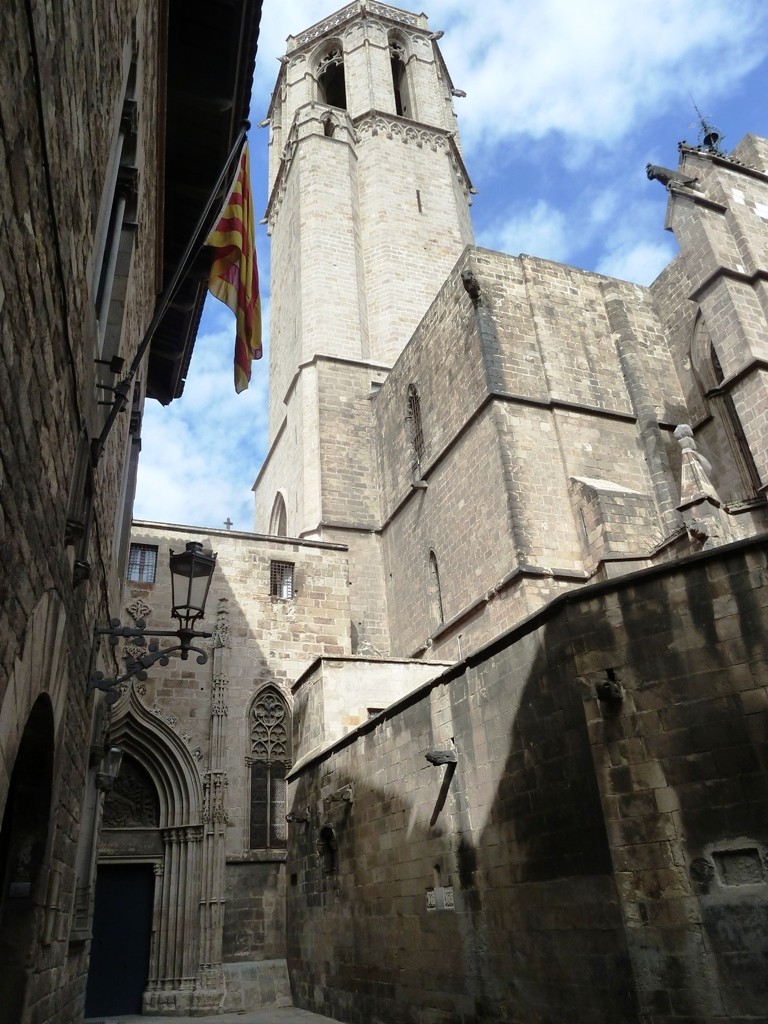
Obviously, the palace located at the end of the plaza is the Palau Reial Major, built in the 11th century to house the earls of Barcelona (in the following centuries, though, it would become the abode of the kings of Aragon). A staircase leads up to the entrance to the majestic hall called Salòn del Tinell, realised between 1359 and 1362. According to some legends, it was the place where Christopher Columbus was received by the Catholic kings once back from his journey to America (of course, as in 1469 the marriage between Isabel and Fernando had celebrated the union of the crowns of Castilia and Aragon, the palace had become the abode of the Spanish kings). Nowadays the building, together with the nearby Capella de Santa Agata, houses the Museum of History of Barcelona, where the remains of the ancient Barcino are preserved.

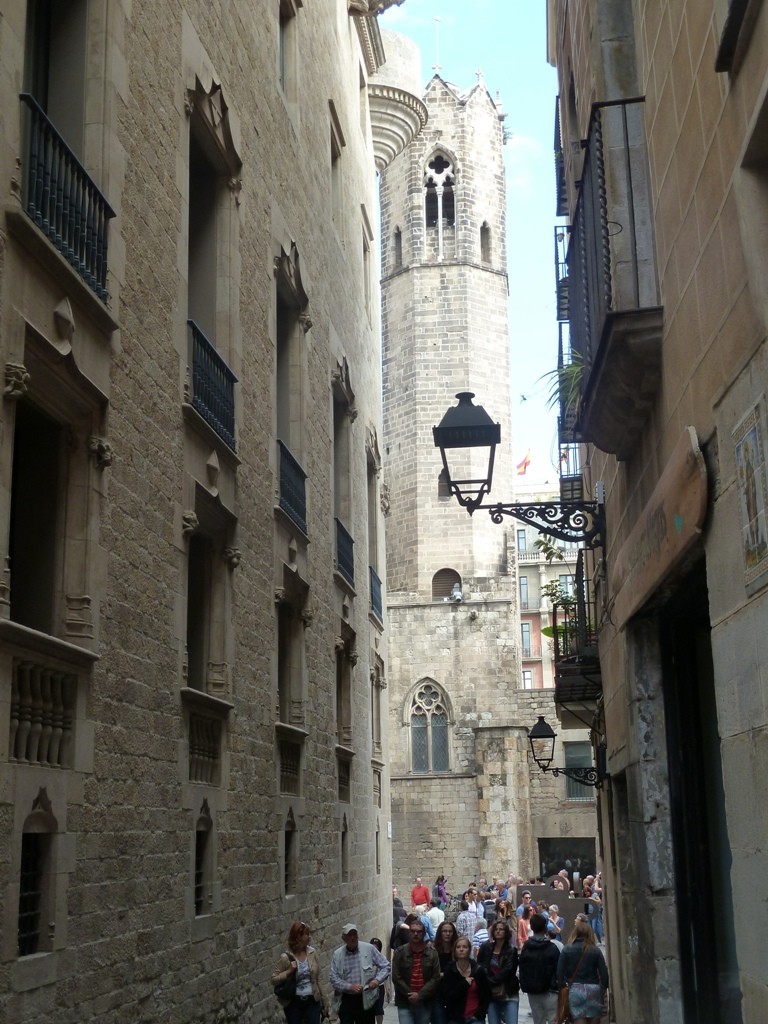
On the opposite side of the square, instead, a later but not less interesting palace is found, namely the Palau del Lloctinent. Built towards the half of the 16th century as the residence of the Spanish viceroy in Catalonia, it has recently undergone restoration works, so that is now displays all its appeal. In particular, the inner patio is the most attractive feature, mainly due to its colonnades and to wooden carvings in mudejar style of the upper floor. If the palace can be visited freely, a modest 4 euro entrance fee will allow you to visit the adjacent Museu Frederic Mares, where the variegated collection of this local nobleman is gathered.
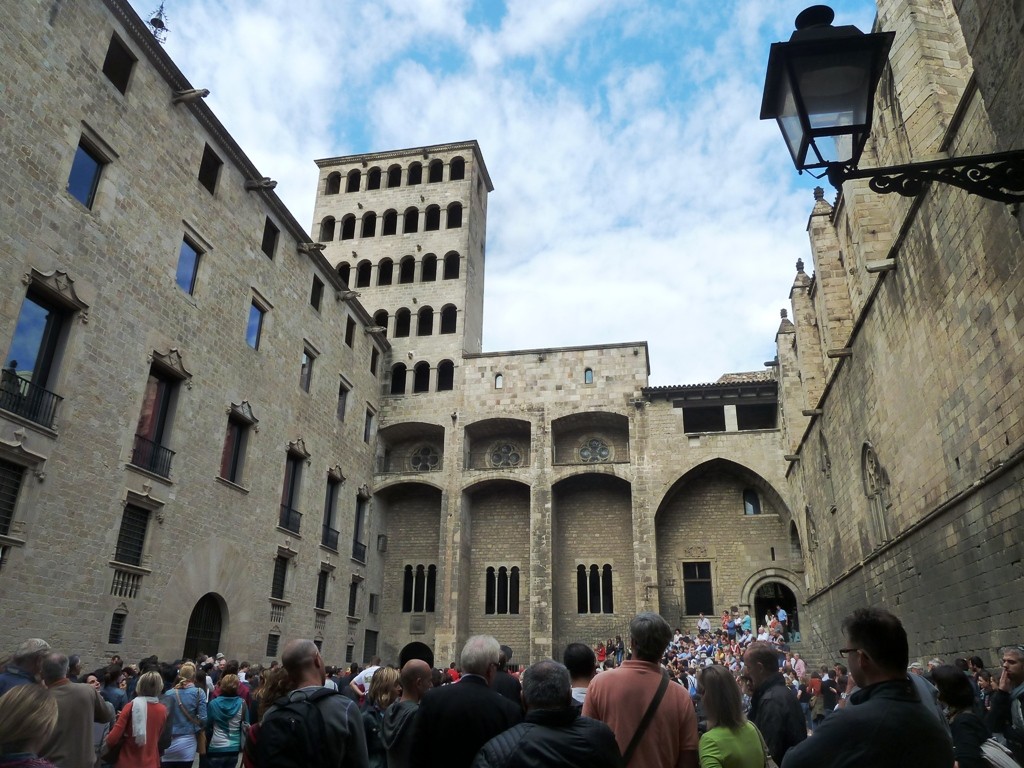

Leaving finally Plaza del Rei and the surrounding buildings, I headed for Plaza de la Seu. Once at the end of Carrer dels Comtes, though, I turned right and went down the narrow sloping alley leading to Plaza de Ramon Berenguer el Gran. The main purpose of this detour was the possibility to admire the remains of the ancient Roman walls, protecting the buildings I had previously seen, clearly visible from the adjacent Carrer de la Tapineria. Back to Plaza de la Seu, it was finally time to see, at last, the Cathedral.
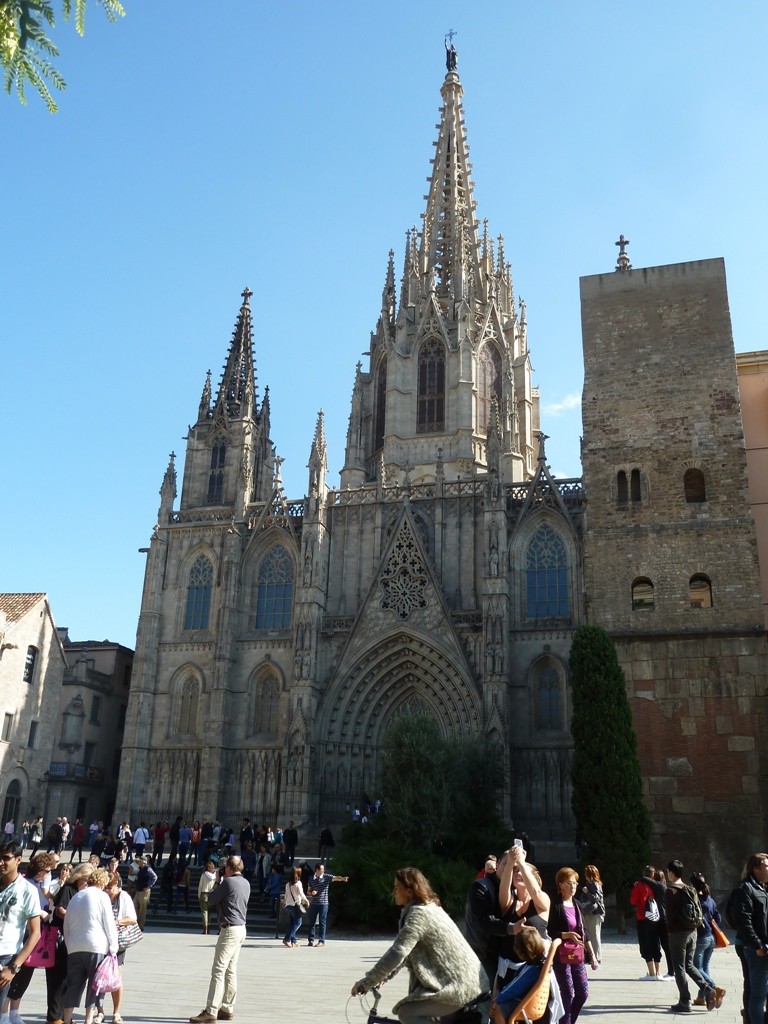
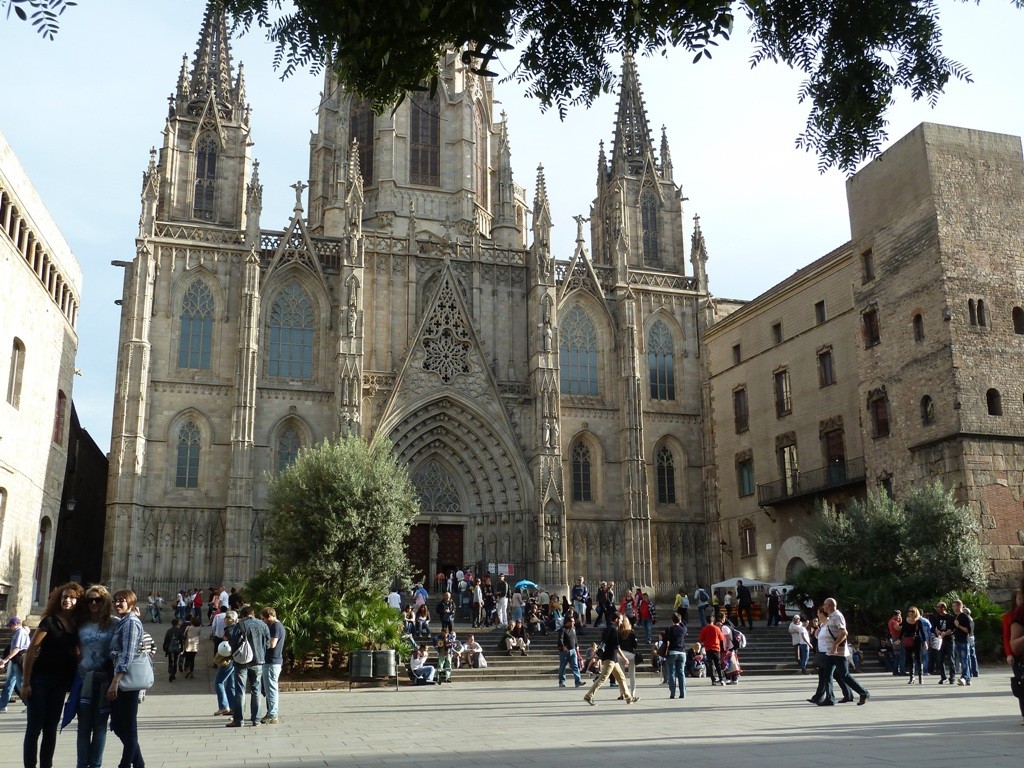
This imposing church is obviously one of the symbols of the city. However, its story is quite curious. Apparently a typical example of Gothic architecture, akin to many other European Gothic cathedrals, the facade was in fact added only in 1870, though on the basis of a plan dating back to 1408. Indeed, the difference of style between the facade and the rest of the church is quite evident. Built between 1298 and 1460, the Cathedral is a clear example of Gothic architecture in its Catalan version, which is more sober and less vertical than the original one. The inside is quite sober as well, characterized by a wooden choir and three naves, separated by two lines of columns. Although, the most characteristic part is probably the cloister, where you can find abundance of plants and columns and, above all, the famous 13 geese. According to the tradition, this number is due to the age of Santa Eulalia, the saint patron of the city, at the time of her martyrdom. For that reason, a number of geese has always been present in the cloister, since the Middle Ages, as a sign of protection for Barcelona. The price is probably the only drawback in the visit to the Cathedral: the entrance to the church and the cloister costs altogether about 8 euro.
Photo gallery
Content available in other languages
- Français: Dans le centre de Barcelone (5)
- Español: En el corazón de Barcelona (5)
Share your Erasmus Experience in Barcelona!
If you know Barcelona as native, traveler or as exchange student... share your opinion on Barcelona! Rate different characteristics and share your experience.
Add experience →

























Comments (0 comments)